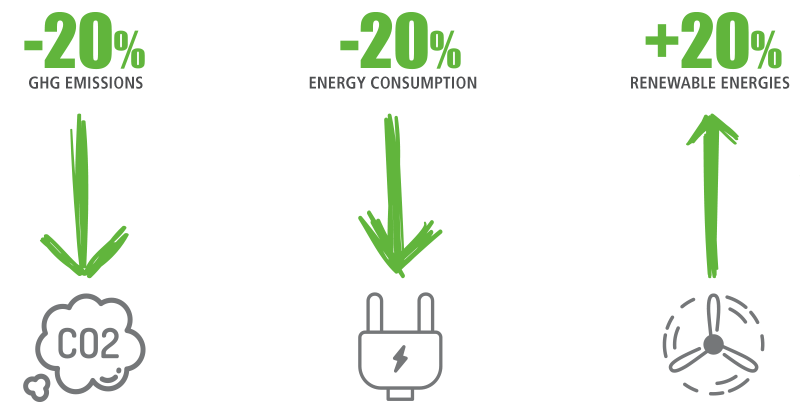Living comfort or energy efficiency?
RECONCILING THESE TWO NEEDS IS THE REAL CHALLENGE
The energy efficiency of buildings is an objective to be achieved through right design, implementing all the most suitable technologies and construction solutions to guarantee high heating, cooling and insulation performance.The application of innovative technologies offers concrete solutions to achieve high energy efficiency, but the great challenge for designers is to reconcile living comfort with sustainability needs.
This is a combination that is not at all obvious, because in the design phase it is necessary to consider numerous variables and often the most energy efficient formula may not coincide with the best performing solution in terms of comfort and aesthetics. After having framed the most convenient compromise based on the type of use of the property, a further step forward can be taken with an intelligent system that manages the heating, air conditioning, ventilation and lighting systems in a synergistic and effective way.
The commitment of companies and designers towards increasing energy efficiency is supported by constantly evolving legislation. At the same time, awareness among citizens increases, the technical skills of professionals grow and the energy performance of products improves, thus triggering the virtuous circle of right design.

By "right design" we mean the growing attention to energy efficiency in renovations and new buildings, attention which at a legislative level is regulated in many aspects, starting from the "20-20-20" strategy which calls for:
- reduce greenhouse gas emissions by 20%.
- reduce energy consumption by 20% by increasing energy efficiency
- meet 20% of European energy needs with renewable energy.
To achieve these objectives we have at our disposal the legislative instruments of the Climate and Energy Package, including Directive 2009/28/EC on the promotion of the use of energy from renewable sources (implemented at national level by Legislative Decree no. 28/ 2011).
The directive hopes that architects and urban planners will take into consideration an optimal combination of renewable sources and highly efficient technologies during the design phase. It also highlights the need to address information and training gaps, particularly in the heating and cooling sector.
Since buildings are responsible for 40% of global energy consumption in Europe and influence long-term energy consumption, the objective to aim for, as indicated by Directive 2010/31/EU (implemented at national level by the Legislative Decree of 4 June 2013, n°63) are almost zero energy buildings.
Many factors can contribute to the realization of the great energy saving potential in construction, a still unexpressed potential that embraces both new buildings and renovations, the latter being crucial as the existing real estate assets are largely obsolete.
The factors of right design
Energy efficiency arises from teamwork, to obtain levels of energy efficiency consistent with the comfort objectives established and/or in accordance with the law it is necessary to act on all aspects of a building.
- The type of heating and air conditioning system
- The use of energy from renewable sources
- The efficient regulation of the systems
- The introduction of passive solar systems
- Indoor air quality
- Natural lighting
Since there is no universal standard, the strategy to be pursued is outlined in the Energy Efficiency Directive 2012/27/EU (implemented by Legislative Decree no. 102/2014), which introduced a program to make public building stock more efficient, energy audit obligations for large companies and the indication that renovations should reduce a building's energy consumption by a significant percentage compared to previous levels.
One step at a time, the road to travel together is the one that leads to an increasingly smart home in which maximum comfort coexists with minimum consumption of resources.

